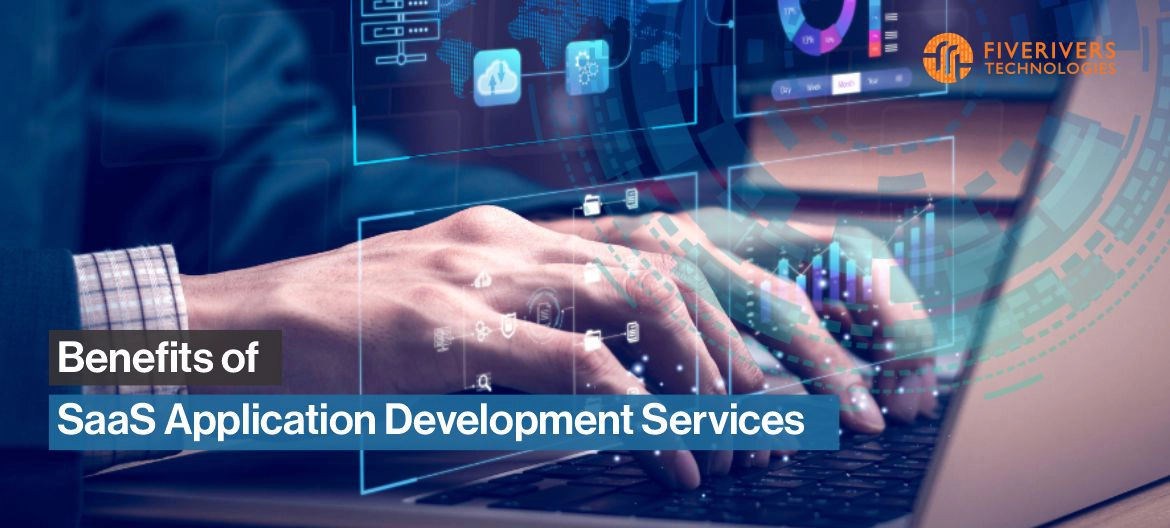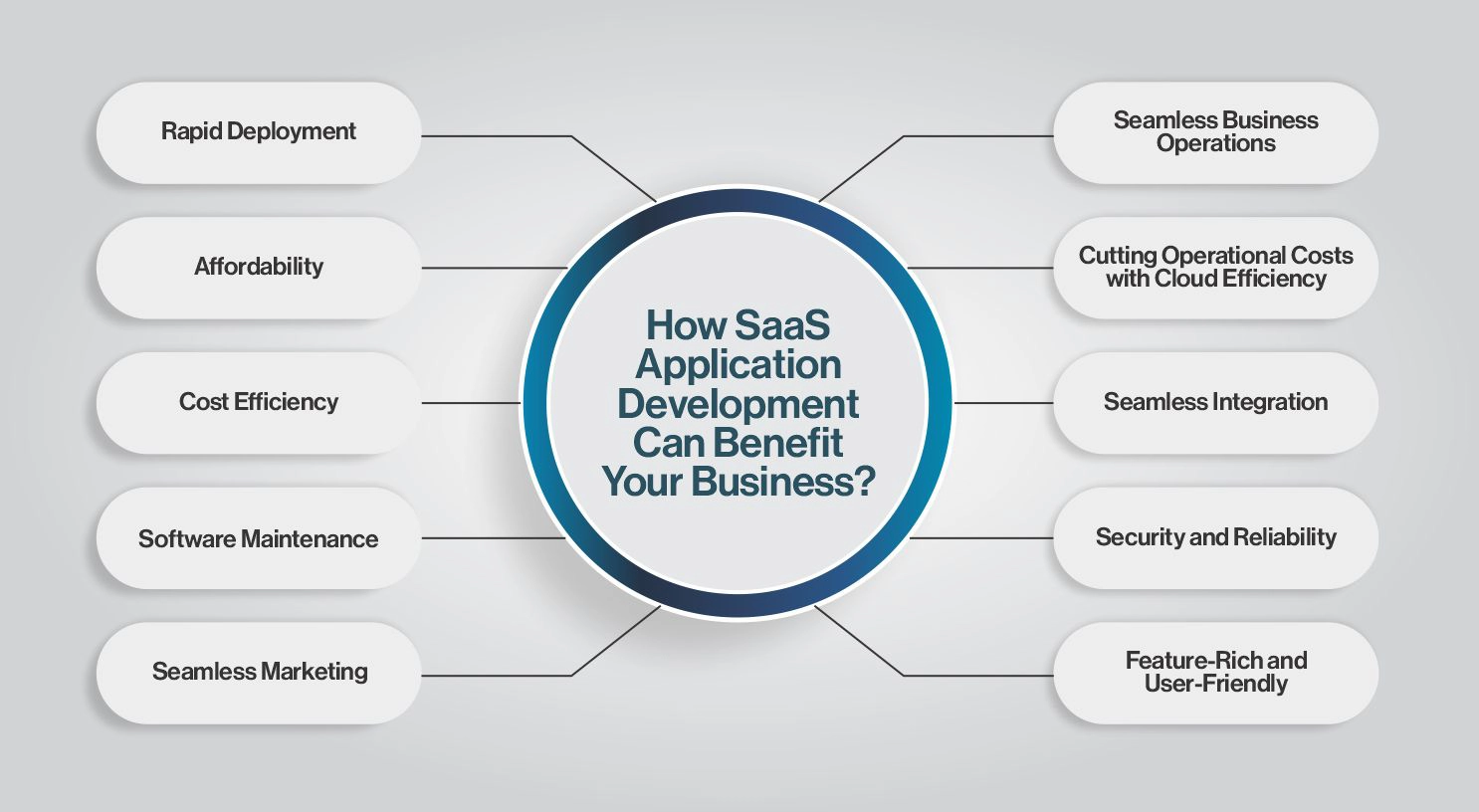Nowadays, the role of building SaaS applications is important. SaaS emerges as a long-term strategy for businesses dedicated to delivering top-notch services and products to their customers. It is the initial step for many companies in the broader shift toward cloud-based IT systems, a trend gaining significant momentum.
A recent Gartner research report highlights the growing importance of cloud technologies, stating, “Almost two-thirds (65.9%) of spending on application software will be directed toward cloud technologies in 2025.”
Despite this trend, some companies remain uncertain about adopting SaaS models in their business. The success stories of others may not seem replicable in their unique cases.
Whether you’re contemplating the adoption of SaaS business applications or haven’t considered it, this article is for you. Let’s see why you need SaaS application development services for your business!
Key Takeways:
- Companies use around 110 SaaS apps on average for running their business
- SaaS applications streamline business processes and also eliminate the need for hefty investments
- Because SaaS solutions are cost effective, more companies will be using SaaS products in the long run
Why Use SaaS Applications?
Chances are, you’ve already interacted with a SaaS application, and you might be using several. According to a report by BetterCloud, companies typically employ around 110 essential SaaS apps on average, highlighting that SaaS has become a common practice.
Applications like Office365, Google Photos, and more are everyday examples of SaaS. For instance, digital marketers leveraging tools like SEMrush, BuzzSumo, and Feedly use subscription-based SaaS apps.
Effective application management is key for businesses to harness the benefits of SaaS applications fully. They offer a low-cost, flexible, and easily maintainable alternative for implementing business strategies.
The beauty of SaaS lies in not needing an expensive IT infrastructure or a dedicated development team for in-house devices. Plus, you can scale customer-dependent functions rapidly without geographic or physical restrictions. All you need is a solid internet connection and a simple web browser.
How Can a Saas Application Development Improve Business?
The rise of SaaS applications is reshaping business dynamics, offering a spectrum of advantages such as cost savings, convenience, scalability, and flexibility. Regardless of your business size, these benefits, from small startups to large enterprises, can be a game-changer in the ever-evolving digital landscape.
As a cloud-based solution, SaaS streamlines business processes, eliminating the need for hefty investments in hardware and software. Also, the scalability of SaaS ensures that your costs can align seamlessly with your business expansion.
Let’s explore the key benefits and see how SaaS can elevate your business, positively impacting your bottom line.
How SaaS Application Development Can Benefit Your Business?
Rapid Deployment
SaaS brings a quick and efficient deployment process. Instead of investing hours or days installing applications on individual devices, SaaS allows access through a simple web browser. Forget compatibility concerns or installation hassles; SaaS has got you covered.
This swift accessibility means businesses can get up and running with the latest software in a fraction of the time compared to traditional methods.
Affordability
Entering the realm of SaaS development comes with exceptionally low upfront fees, contingent on the specific services chosen. Universally, the pay-as-you-go model prevails, making initiating a business relationship and investing in a SaaS plan simpler when anticipating business growth.
This accessibility is a primary driver behind the substantial demand for SaaS development across businesses of varying scales. It eliminates the risk of significant monetary loss, offering a more financially flexible approach.
Cost Efficiency
Zippia says, “99% of companies will be using one or more SaaS solutions by the end of 2023.” The allure for businesses lies in its cost-effectiveness compared to traditional hardware-based software solutions. The key reason behind this is the absence of investment costs in new IT hardware or the need to train and hire resources for maintaining expensive local hardware. Consequently, SaaS applications emerge as a significantly more budget-friendly option overall.
Software Maintenance
Software updates can be a major headache for IT departments. With SaaS, this burden is lifted as updates are handled automatically. Businesses can rest assured that they are operating with the latest software versions.
This means businesses can concentrate on their core activities, leaving the software to take care of itself. Simplifying the complex task of software maintenance!
Seamless Marketing with Free Trials
A standout advantage of SaaS lies in its easy marketability. SaaS effortlessly offers free trials, enabling potential customers to test the software before committing. This approach provides users with the time and accessibility needed to explore and appreciate the software’s capabilities.
It unfolds an impressive “nothing to lose” marketing strategy, showcasing the software and building trust with potential customers. The free trial becomes a powerful tool to let the software speak for itself and create a positive first impression.
Cutting Operational Costs with Cloud Efficiency
Switching to an on-the-cloud operational model can lead to significant savings for your in-house IT team. This eliminates the need for regular maintenance fees, dealing with routine backup issues, updating schedules, and more.
When you partner with a reliable application development services provider, they take on the responsibilities of maintaining hardware, reducing the risks of downtime or system failures, keeping software up-to-date, and handling training and recruitment.
Seamless Integration
Worries loomed about compatibility between legacy systems and SaaS in the pre-SaaS era, but those concerns vanished as SaaS applications demonstrated remarkable consistency. SaaS integrates with existing software effortlessly, boasting built-in APIs and integration points that connect solutions seamlessly.
Security and Reliability
Security concerns often greet new platforms, but a Gartner study dispelled worry, emphasizing that cloud computing is a secure space for data migration and business operations. SaaS application development services prioritize security, with vendors safeguarding customer details. Enterprise application development services providers ensure smooth, secure operations, maintaining servers across continents for a robust reputation.
Feature-Rich and User-Friendly
SaaS brings a dynamic edge, enabling swift company-wide updates and feature rollouts. Unlike traditional systems, SaaS allows quick implementation of improvements, empowering teams to utilize the latest features for better decision-making. With onboarding documents, training, and user-friendly interfaces, SaaS ensures teams can easily access and benefit from a suite of powerful, modern features.
In essence, SaaS development results in a user-friendly, feature-rich solution that enables businesses to deliver excellence to their customers.
Conclusion
Many companies are now moving their operations to the cloud using SaaS applications, and it’s becoming quite common. Why? Because it’s a hassle-free experience with added benefits.
If you’re considering bringing your business to the cloud through SaaS application development services, you should check out FiveRivers Technologies. We’re a well-known company globally, experts in SaaS application development, custom application development, enterprise mobile application development, and IT consulting. Our dedicated team is here to help you navigate possibilities and challenges, making moving to the cloud smooth for your business.
FAQs
1. How to Create SaaS Applications?
- Conduct Market Research
- Gather Necessary Requirements
- Choose the Right Tech Stack
- UI/UX is Important
- Determine Pricing
- Launch the app
- Incorporate User Feedback
- Provide Post-Launch Support
2. What is the SaaS Model of Development?
The SaaS (Software as a Service) model of development involves design, development, unit testing, debugging, and integration.
3. What is An Example of a SaaS Application?
Google Docs, Microsoft 360, Dropbox, Spotify, and Netflix are all examples of a SaaS application.








